Park City is home to a number of historical buildings. They add real charm to our little town, especially for a real estate geek like me. Fortunately, ample foresight has been taken by stakeholders to preserve these beloved structures. They dot the local landscape like old friends and are well preserved and utilized to this day.
The best part about these historic Park City buildings is that they all can still be enjoyed by the public. And they can all be accessed year-round. You can get married in Miner’s Hospital. Grab a cup of coffee at the Park City Library. And spend the afternoon at the Museum. For dinner, head on over to Zoom for the short ribs.
Miner’s Hospital
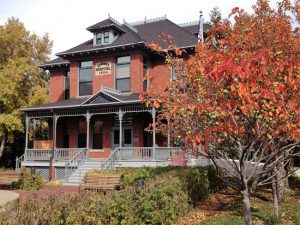
The Park City Miner’s Hospital was built in 1904 to provide medical services to the miners in the area. Its original location was at the north side of the Park City ski area. At the time, the closest hospital was in Salt Lake City. That 30-mile journey would have been especially cumbersome in winter. The hospital remained a clinic until the 1950’s. Then it was renovated into a restaurant, bar and youth hostel. In the 1970’s, development plans threatened to demolish the structure and it was moved to the present site in City Park. In 1982, the building was remodeled to contain the Park City Library.
Currently, the Miner’s Hospital is a meeting and event space and can be reserved for meetings, parties or weddings. It is surrounded by beautiful gardens and is easily accessed by public transit, foot or bike.
Park City Library
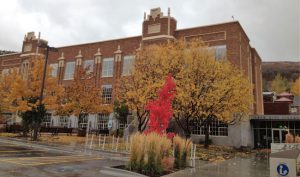
The High School building was built in 1928 and in 1993 the Library moved in. Coincidently, the library did a brief visit back to the hospital in 2015 while the structure went through an extensive renovation.
Now known as the Park City Library and Education Center, the building is truly a location where old meets new. The library has state-of-the-art computer labs, an extensive children’s library and the Park City Roasters coffee shop. Plenty of community activities take place here. Community classes and programs for all ages, the Park City Film Series, the Park City Cooperative Preschool to name a few. Even dogs can enjoy the library as the outdoor field is pet friendly and leash-optional. It’s the only off-leash area in Park City proper.
Park City Museum
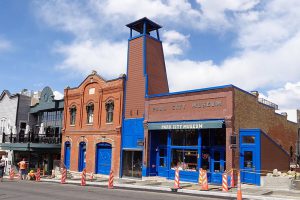
The Park City Museum can be found in the historic City Hall, which was built in 1885. The original cost to build city hall was $6,400! At that time, Park City’s Main Street was boom town central and many buildings were being built. City Hall was home to the police and fire department as well as the Territorial Jail, all of which remain as exhibits today.
A fire in 1898 destroyed much of the building and others on Main Street. In an effort to prevent future fire catastrophes, a Whistle Tower was built in 1901 to warn residents of fire in the area. In 1905, the whistle was replaced by an electric siren and sounded each night at 10:00 p.m. to warn youngsters of curfew. This prudent tradition continues signaling to Old Town visitors and residents that it is 10 o’clock.
Union Pacific Train Station
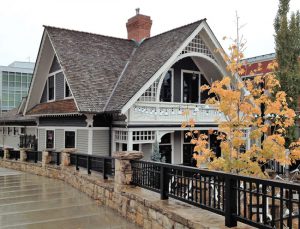
In 1886, an iconic train station was built at the bottom of Main Street. Its main purpose was to accommodate the transport of silver from the mines. Upon completion, the Park Record wrote, “The building is one of the finest in Park City…the design is modern [and] tasteful and brilliant yellow paint adorns it on all sides.” For about 100 years, this building facilitated travel for freight and passengers. It ceased operations in 1977.
In 1995 Robert Redford renovated the historic Park City building into Zoom Restaurant, part of the Sundance properties. Patrons can enjoy quality American continental cuisine in a fun, memorable atmosphere. As a hallmark of the past, the rail bed remains in place today.
McPolin Barn
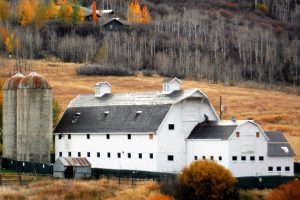
The timeless White Barn that marks the corridor into Park City began as a 160-acre farm in 1886. In 1908, the barn was erected with recycled timber without the use of nails. It operated as a dairy farm for many years until the city purchased the property in 1990.
McPolin Farm House
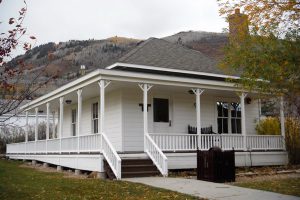
The McPolin house was relocated to its current location in the 1920’s. Prior to being a farm house, the charming structure served as a mine office. Park City purchased the farm in 1990 and has refurbished all areas of the farm.
Currently the White Barn is under construction. Yet the bike path, skiing and hiking trails remain available for use. A beloved location for family photos, vista seeking families can often be seen snapping shots around the farm house.
High West’s National Garage
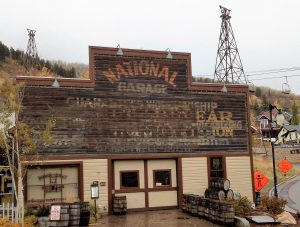
High West’s Old Town location is in two historic buildings. The Saloon is in an old Livery Stable built sometime around 1907. Horses that pulled carts of ore out of the mines were kept there. In fact, the horseshoe seen in the High West logo was a horseshoe found while renovating the livery. The livery would later become the National Garage. When a building across the street went down in flames, the heat was so intense that it peeled other layers of paint from the building.
The National Garage sign boasts a layered patina look that High West has preserved. Whisky lovers and hungry patrons can enjoy a beverage or a delicious meal at the world’s only ski-in-ski-out gastro distillery. A favorite amongst locals and tourists alike.
High West’s Ellsworth J. Beggs House
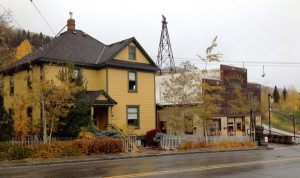
Next to the National Garage sits the stately Victorian-style Ellsworth J. Beggs house. E.J. Beggs was a master carpenter and built his home in 1914. At the time, it was one of only two Victorian homes in town. Beggs constructed the house right after completing the Summit County Courthouse in Coalville, which stills serves as the County seat.
Now connected to the National Garage, High West patrons can enjoy a meal or expertly mixed drink in one of the charming rooms or on the inviting patio.
Swaner Farm
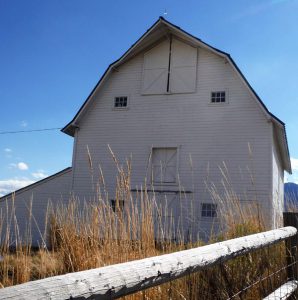
There’s not just one historic white barn in town. This white barn next to Highway 224 is a welcome site as one passes through the bustling Kimball Junction. In fact, the farm was purchased in 1884 by the Kimball family who operated a stagecoach service between Park City and Salt Lake City. The barn itself was built in 1933. It was a farm until the property was purchased by the Swaner Nature Preserve in 2003.
Swaner Stone House
The stone house next to the white barn was built in the 1990s. A number of families farmed the area until 2003.
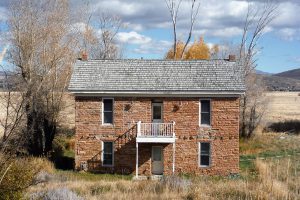
Currently, the house and barn mark a corner of the Swaner Nature Preserve. They are connected via boardwalk to the paved bike path perimeter of Kimball Junction. Eventually, the barn will be fully restored to host community events. But is not currently in use.
A walk around Park City is like a walk through a history book. Whether you are hiking past an old silver mine or viewing fine art in a Main Street gallery. We consider ourselves lucky to be able to enjoy the rich and vibrant history that these buildings offer. These are only ten of Park City’s historic buildings but there are many, many more. Which are your favorites?
References: Park City History | Zoom Park City | High West Distillery
4 Comments
Hello, I found an error in one historical account. Park City Miners Hospital was a functional hospital and clinic until the late 50’s early 60’s.
I was born in the hospital in 1953 and was hospitalized there for 3 days in 1958. It wasn’t used as a hostel until after the developers came around 1963.
I thought you might want updated info.
I’m writing my memoir and found your site when researching.
Great article.
Thank you Charlotte for your corrections. I’m glad you found my blog helpful.
My grandparents, Last name Timm, owned and operated the Highland Park Greenhouse or retail florist on 4444 Travis Street in the late 20’s, early 30’s until their deaths in the 1950’s. Do you have any information concerning the greenhouse or suggestions where I might begin my search?
My uncle, also named Fred Timm, designed the pink curvy wall on Northwest highway, near the intersection of Preston Road and NW Highway.
Thank you, Sandra “Timm” Daniels.
The Swaner house definitely does not look like it was built in the 1990s. A hundred years earlier, perhaps?